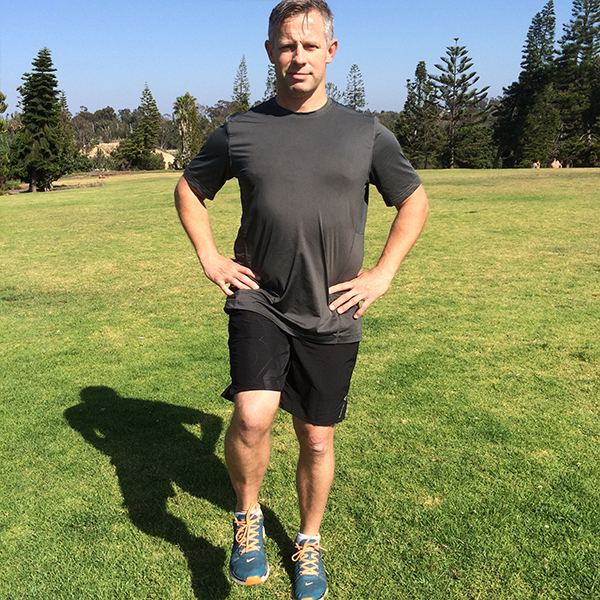
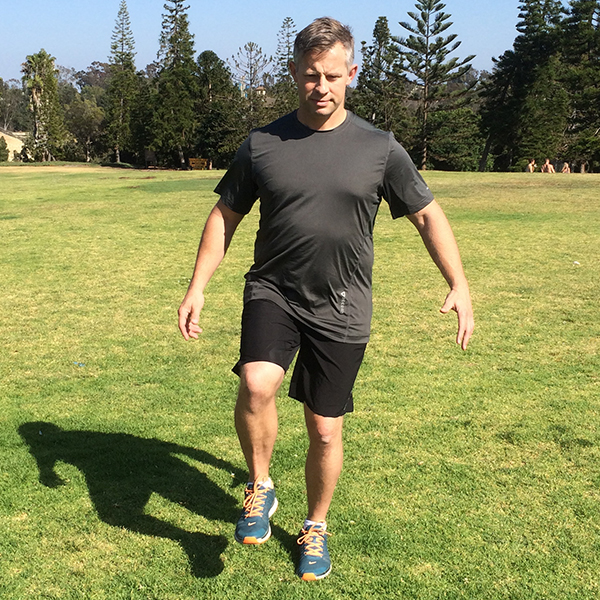
Find Your (Dynamic) Balance
Dynamic balance, which we explained in a previous post, helps us catch the long bomb, boogie with our grandkids, and stay classy in our favorite Louboutins* (more on those later). Developing it requires recreating the dynamic challenges of life’s activities, where we must control our center of gravity over a moving base of support. And while balance boards, Airex pads, or BOSU balls can be used for balance training, the best place to start is with our own two feet.
The Moves 1. Single Leg Balance The simple balance movement like this gently preps the body. Turning the head challenges control as our field of vision changes. Moving the other leg works on stability as our body’s position shifts. Together, this set improves our ability to take in the view while hiking or cycling without thinking about our balance. A. Single leg balance: Stand on one leg with your other leg raised. Balance for 30 seconds on each leg, and perform two sets.
|
B. Single leg balance with head movements: Balance on one leg. Then slowly move your head so that you look up to the ceiling, and down to the ground, and then up again. Hold for 30 seconds on each leg. Then repeat, but look from left to right for 30 seconds on each leg.
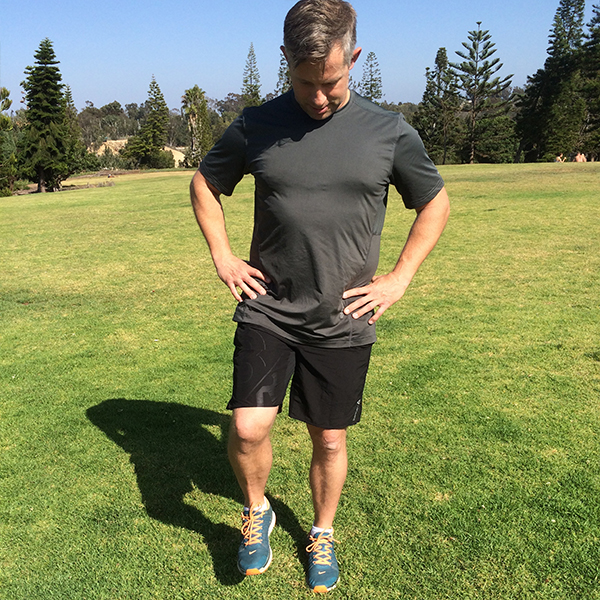 | 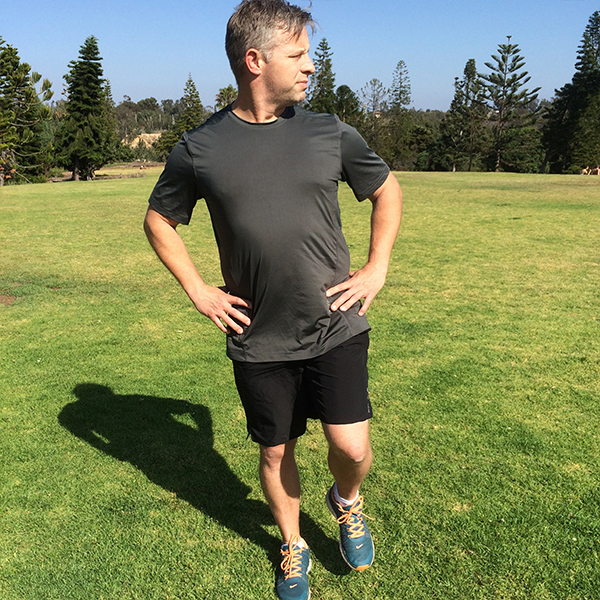 | 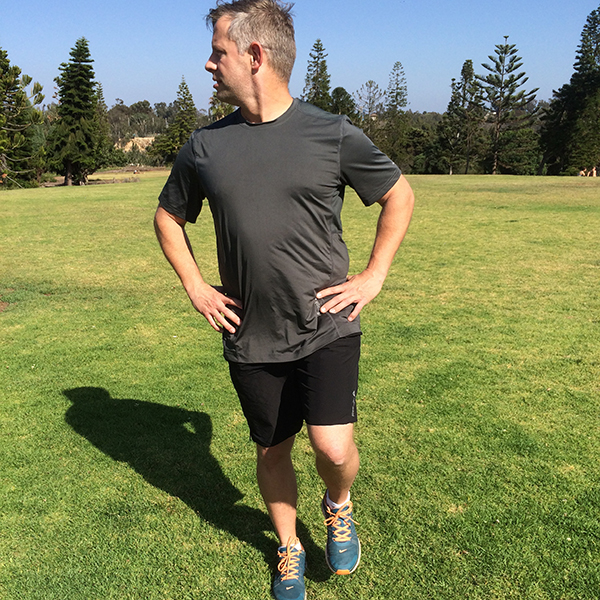 |
C. Single leg balance with leg movements: Balance on your right leg. Reach your left foot out to 12 o’clock. Bring it back to center and reach to the 9 o’clock position, then the 7 and 6 o’clock positions, and back to the start.
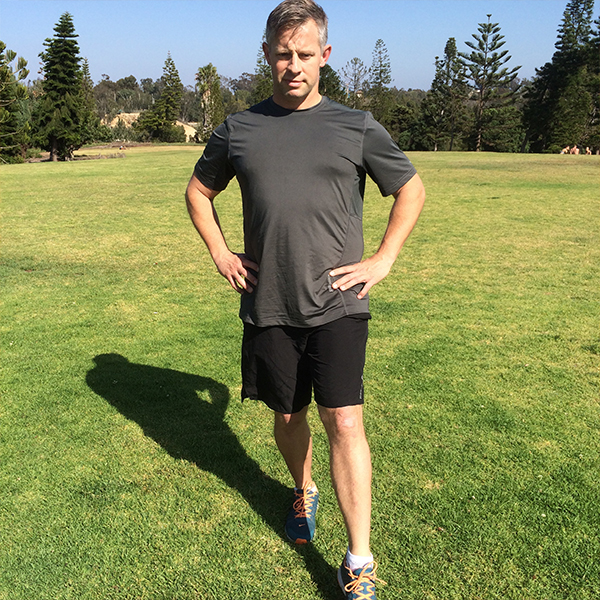 |  |
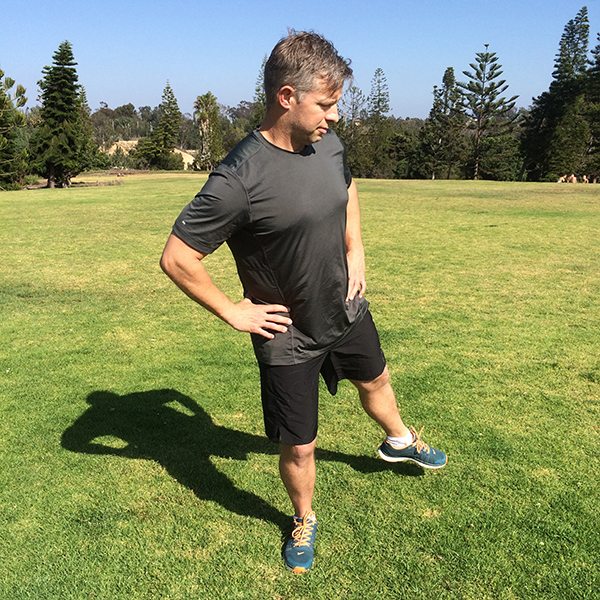 |  |
Then switch to balance on your left leg and reach to the 12, 3, 5, and 6 o’clock positions with your right foot. Complete 2 sets on each leg.
2. Forward lunge to balance
Controlling deceleration as we transition from a lunge to a single-leg position creates stability of the pelvis, hip, knees and ankles. This control is required when only one leg is in contact with the ground at a time—sprinting for the bus, jumping a puddle on the sidewalk, or cross-over steppin’ in a line dance.
From a standing position, step forward with your right foot and sink into a lunge. Then press up to standing on your right foot, and lift your left foot off the floor. Return to the start position and repeat for eight reps before switching legs and doing eight reps with the left foot.
Rest for 45 seconds or so before performing a second set.
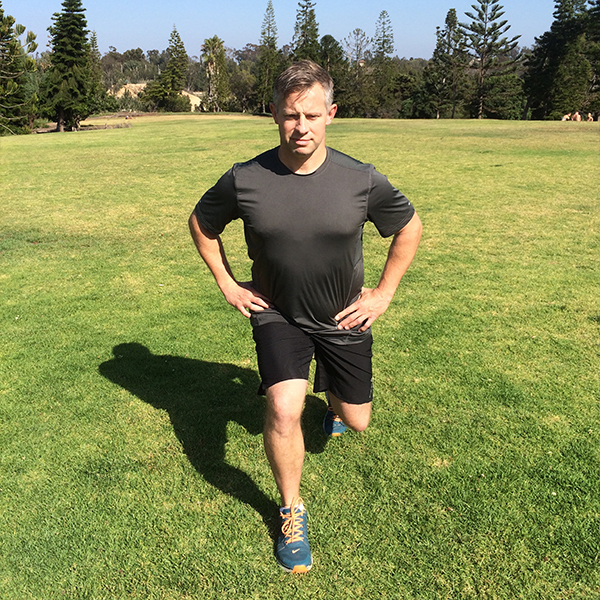 | 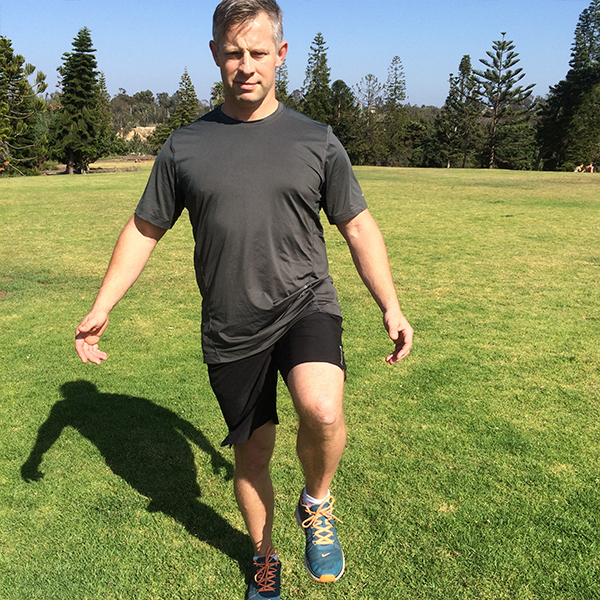 |
3. Bounds
Ever missed a step on your way down the stairs? Then you’ve felt the hip muscles rapidly stabilize your leg to prevent a fall. Bounds improve this reflexive stability.
A. Lateral bound to balance: From a standing position, jump out to the right and land in a single-leg balance on your right foot. Hold here for three seconds, then jump back to the left, landing in a single leg balance on your left foot. Complete six reps on each leg, then rest for 45 seconds before performing a second set.
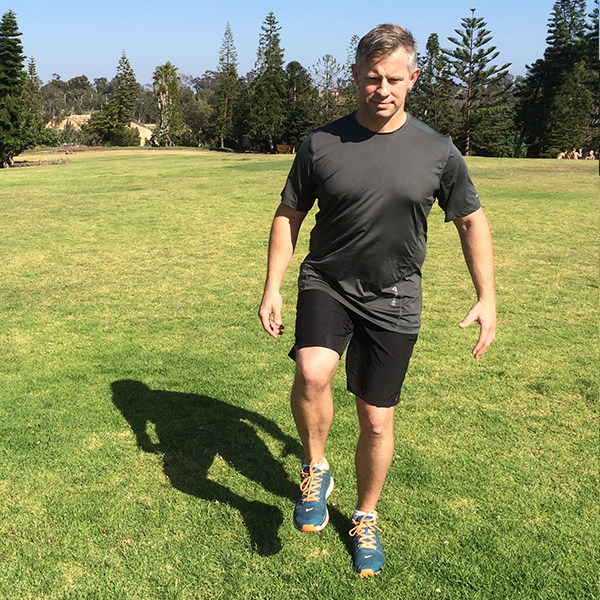 | 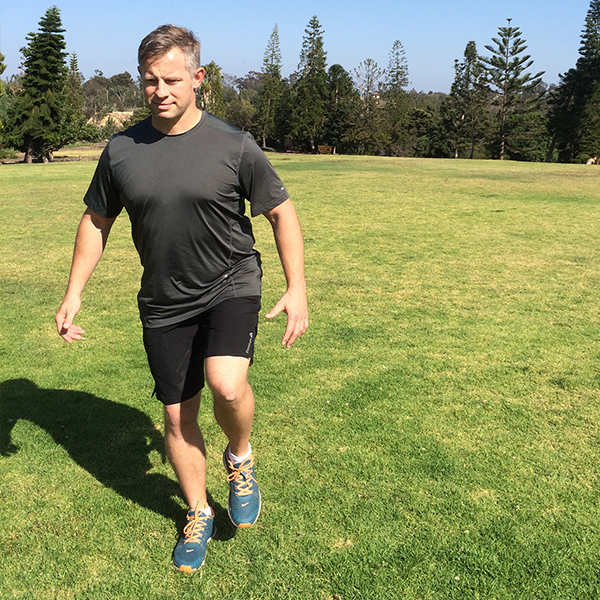 |
B. Forward bound to balance: From a standing position, bound forward to land in a single-leg balance on your right foot. Hold here for three seconds before returning to the start position. Perform 6 bounds per leg, then rest for 45 seconds before performing a second set.
 | 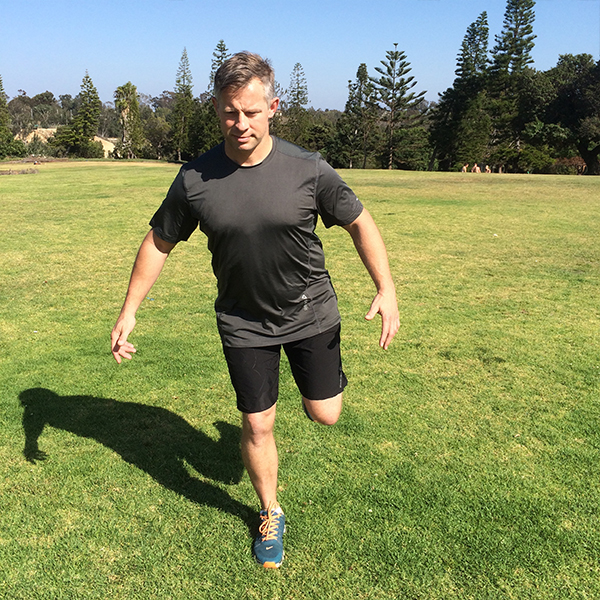 |
*Next time, we’ll be tackling the love/hate relationship human biomechanics has with high heels. And gentlemen, this is a must-read for you, too—any stiff-soled shoe with an elevated heel (however slight the lift) can impact balance!
